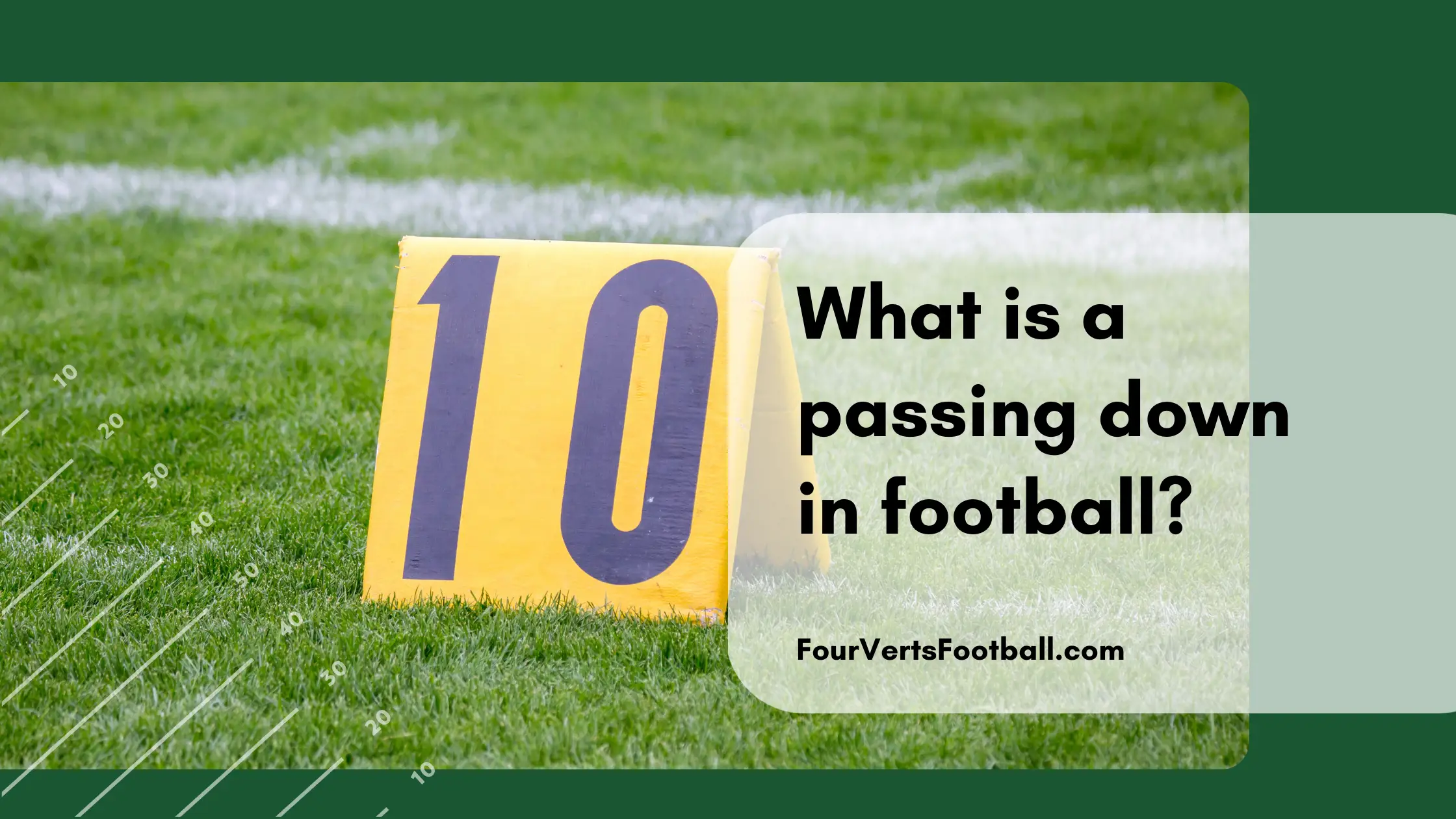Passing downs in football are plays in which the offense is expected to gain yards via a forward pass. By definition, passing downs occur on 2nd down when there are more than 8 yards to gain or 3rd/4th down when there are more than 5 yards to gain.
Overall passing plays are going to gain more yards than rushing plays on average. So when facing a larger distance for a first down teams are often forced into passing the ball.
The has effects on both team’s play-calling and personnel.
Personnel Changes
One thing you will notice on passing downs in football is that the offense and defense are likely going to change which players they have on the field.
One common change done by the offense on these plays is to add more receivers. This is usually done by removing a tight end or running back from the field.
Since the team is likely going to pass the ball the use of tight ends for blocking is not as important. Instead adding more receiving options for the quarterback is done by adding a third or fourth wide receiver.
The offense will often change the running back they have on the field. Running backs on passing downs need to be proficient at catching the ball out of the backfield as well as in pass protection.
For this reason, you will often see third-down backs used on passing downs.
The defense will make changes as well on passing downs typically adding more defensive backs to the field.
They will often substitute a linebacker off for another cornerback and play a dime defense.
This style of defense is better suited to stop a passing play and allows another defensive back to match up with the additional receiver on the offense.
Common outcomes of passing downs
Now that we’ve broken down what a passing down is you may be wondering what the common outcomes of these plays are. Below we are going to break down some of the most likely scenarios to play out when a passing down occurs.
Passing for the first down
The ideal outcome for the offense on a passing down is to complete a pass for the first down. On these plays, the offensive play will be chosen with the intention of getting the first down.
Receivers will run routes that will get their team a first down if they are able to catch the ball. These routes will often be run right around the first-down marker so that the player will not need to gain any yards after the catch.
When in a passing down the defense has the advantage as they know that a pass is likely coming. This makes it difficult for the offense to successfully convert these plays for a first down.
Sack to end the drive
One fairly common outcome of passing downs in football is a sack via the defensive line.
On these downs pass rushers know the quarterback is likely going to throw the ball. This means they know they have a chance to tackle the quarterback as he will likely be in the pocket for a few seconds.
Defensive ends will take advantage of this and look to find a way to beat the offensive tackle.
When a sack does occur in these situations it is common for it to be the play that stops the drive. Many passing downs are on third down which means the team will be forced to punt.
If a passing down occurs on second down the loss of yards from the sack is often enough to stop the drive from reaching a new set of downs.
That is all on passing downs in football if you want to learn more check our guides to what is an illegal forward pass or what is a seam pass.

